Oct
6
2010
The Fruitful Field
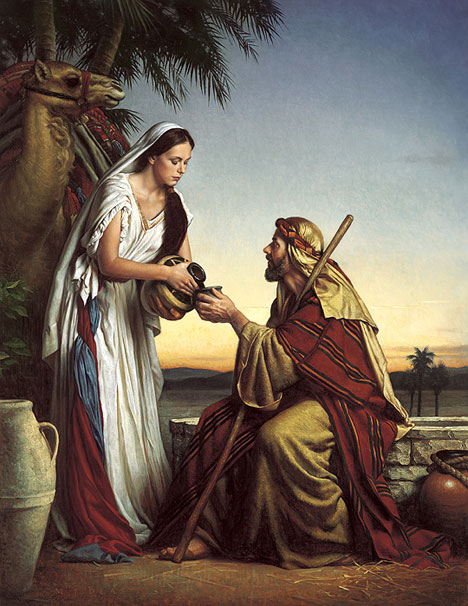
“For I am jealous for you with godly jealousy. For I have betrothed you to one husband, that I may present you as a chaste virgin to Christ.” 2 Cor 11:2
Women are Complex
In Eden, as priest to Eve, Adam’s role was to continually bring her to the Father. She was put “below” Adam in the hierarchy. As the first approach of the High Priest on the Day of Covering — with the blood of a bull — Adam would present himself, standing before God as Mediator (head):
F A T H E R > < S O N + B R I D E
Adam’s job was to bring Eve “between” as the fruit, the evidence, of Covenant relationship. By being faithful to the law, he would open and maintain a clean, safe, Holy Place — a firmament — a house for the bride. The second approach of the High Priest was to cover the body, the nation. In this, he presented the blood of the first goat as the faithful bride (goat hair, symbolising the Lord’s cloud of “bridal” glory, covered the Tabernacle). Like the glory between the Father and the Son in heaven, a glorious Eve was both the fruit of Adam’s obedience, and her future fruitfulness a gift from Father to Son:
F A T H E R > B R I D E < S O N
We see this imaged in the search for and presentation of godly Covenant brides in Genesis. Eliezar and Jacob seek brides for presentation to the Covenant fathers.
Continue reading
Comments Off | tags: Ark of the Covenant, Atonement, Baptism, cherubim, Circumcision, Covenant Theology, Genesis, Joshua, Marriage, Revelation, Satan, Systematic typology, Tabernacle | posted in Bible Matrix, Biblical Theology, Creation
Oct
4
2010
Beyond Binary
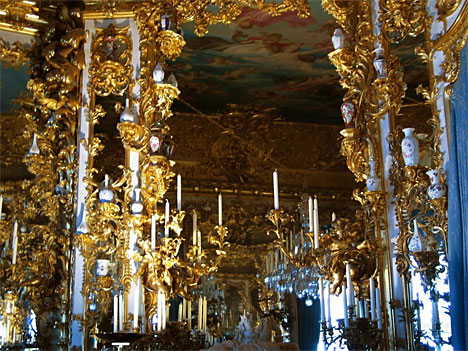
“In my Father’s house are many mansions…”
There are various covenants in the Bible, just as there are in human life. Covenants are the way God does things.
He calls a representative,
…..delegates His authority,
……….gives the mission,
……………allows time for it
……….to be accomplished,
…..assesses the outcome
and throws a party.
If the outcome is good, the delegate and his mission subjects are invited to the feast. If the outcome is bad, the delegated head and his corrupt body are the meat on the table. And the Holy Ones rejoice over their doom. There is always an outcome, a reckoning, a succession, an “offspring.” Continue reading
Comments Off | tags: Covenant Theology, Doug Wilson, Genesis, James Jordan, Postmillennialism, Tabernacle, Trinity | posted in Bible Matrix, Biblical Theology, Creation, Quotes
Sep
28
2010
or The Universe is Flat
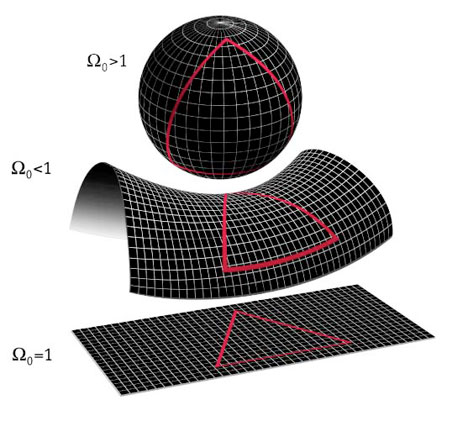 The three density ratios (Ω omega) and the corresponding cosmological morphology. (Goddard Space Flight Center WMAP Cosmology)
The three density ratios (Ω omega) and the corresponding cosmological morphology. (Goddard Space Flight Center WMAP Cosmology)
Therefore, brethren, having boldness to enter the Holiest by the blood of Jesus, by a new and living way which He consecrated for us, through the veil, that is, His flesh, and having a High Priest over the house of God, let us draw near with a true heart in full assurance of faith, having our hearts sprinkled from an evil conscience and our bodies washed with pure water. (Hebrews 10:19-22)
The “firmament” is the most troublesome element of the Creation week. Even when we understand its symbolic counterpart in the Tabernacle (the veil), how do we account for its description as a physical part of the world?
On Day 4, God created the governing lights and put them in the firmament. If this refers to some sort of “water canopy” that later came crashing down in the Great Flood, the language referring to it as a home for stars is then visual. The Adam-to-Noah pattern puts the floodgates of heaven at “Atonement,” which means the opening of this original “proto-veil” brought men face-to-face with the Ark/throne of God and washed away the sin of the world, quite literally. All flesh was cut off. All sin was covered. And it was the end of that Covenant. The sky was rolled up like a scroll. In Noah, God founded a new heavens and a new (mediatory) Altar-Land. Symbolically, the old sun, moon and stars came crashing down. They were the “mighty men” of Genesis 6. Symbolically, God put new rulers in the firmament: a body of men and animals in a covered vessel.
But, of course, the actual governing lights remained. So, there remains something beyond this original watery “sea.” The word translated “firmament” means something flat, beaten out like metal. It is architectural. Cosmologists now tell us that the universe may well be both spherical, hyperbolic and/or “flat,” a bit like the surface of the earth, I guess. [1] God speaks of the mediatory Land as flat because it is an Altar. [2] Space is a veil between men and the throne of God. Filled with lights, it pictures for us the Holy Place before God’s throne, which is populated with angels and the redeemed. This cosmic hall of government resembled a crystal sea.
But there is something strange about the account of the creation of this veil, this dark garment stretched out on Day 2. Like the “waters above” of the original Covenant, space itself has a built-in obsolescence.
Continue reading
6 comments | tags: Abraham, Creation Week, Genesis, Pentecost, The flood | posted in Against Hyperpreterism, Bible Matrix, Biblical Theology, Creation, The Restoration Era
Sep
4
2010
or Forbidden Mixtures – 2

NOTE: THIS POST HAS BEEN REMIXED AND INCLUDED IN GOD’S KITCHEN.
You must be logged in to see the rest of this post.
Join now for a year for $15!
Many theologians will tell you that the Old Testament Scriptures have little to say about resurrection. Yet, typologically, they scream about it constantly if we have eyes to see. Many modern conservatives don’t understand the nature of revelation. God paints the same picture of death and resurrection over and over again at both personal and national levels and all these gents do is record how many pixels are in each image.
For a visual blow-by-blow account of this death and resurrection process, get a copy of Bible Matrix and read it twice. Here, I want to concentrate on the significance of Melchizedek in the Last Supper.
Continue reading
2 comments | tags: Abraham, Communion, Ezekiel, Ezekiel's Temple, Genesis, Joseph, Resurrection | posted in Bible Matrix, Biblical Theology, The Last Days, The Restoration Era
Aug
31
2010
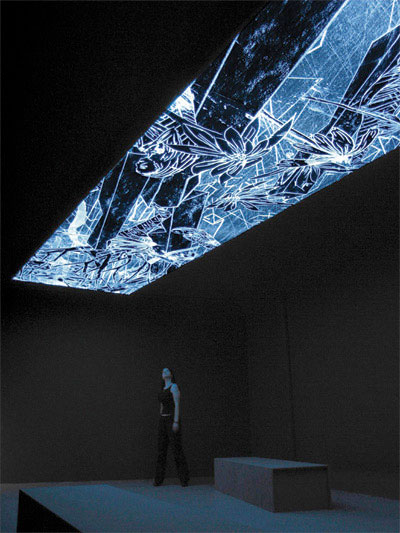
From James B. Jordan’s Trees and Thorns: [1]
The land and garden of Eden were watered by a spring. Why call attention to the fact that God did not send rain? Why not just mention the spring and leave off the statement about rain? The reason, I believe, is to call our minds back to Genesis 1:2-9. We find in Genesis 1:2 that there was an ocean over the original earth. Then God created the firmament, and separated the waters above from the waters below. On the third day God gathered the waters below into areas below the surface of the land.
Now we have a clear distinction between waters above the firmament, the source of rain, and waters below, which would have to come up from under the earth. Both Genesis 1:2-9 and 2:5-6 set up the distinction eschatologically; ground water comes first, and then heavenly water.
Continue reading
Comments Off | tags: Egypt, Genesis, James Jordan, Moses, Sodom | posted in Biblical Theology, Creation, Quotes
Aug
9
2010
An Exhortation to Be A Fruitful Tree
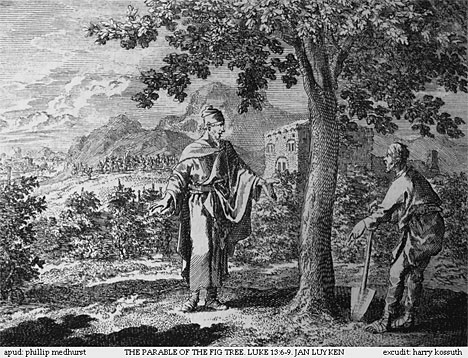
Tabernacles was the final annual feast, a Godfest to be thrown by Jews as a ministry to Gentiles. At the Feast of Clouds [1], every household temporarily became a new house of God, a “local branch” of the Tabernacle, a “priesthood of all believers.” Of course, we see this fulfilled in the book of Acts. Just as we see Paul exhort the Ephesians (Gentiles!) to put on the mediatorial body-armour of the High Priest, [2] his final exhortation to the Roman Christians alludes to not only Israel’s feasts but Israel’s priesthood. Pretty much every church he established was a “booth” made of natural Jewish branches and ingrafted Gentile branches. [3] At Pentecost, the same cloud that received Jesus filled the house. [4] Now every household of faith was a Tabernacle, a glorious cloud with a government of human angel-elders. [5] In the Bible’s literary structure, a recurring motif at Tabernacles is good fruit, godly offspring. God wants more than just a covering of leaves. As in Eden, future generations hang upon wise government.
Continue reading
8 comments | tags: AD70, Add new tag, Atonement, Doug Wilson, Feasts, Genesis, Laver, Literary Structure, Paul, Roman Catholicism, Romans, Systematic typology, Tabernacles, Temple | posted in Bible Matrix, Biblical Theology, The Last Days
Aug
6
2010
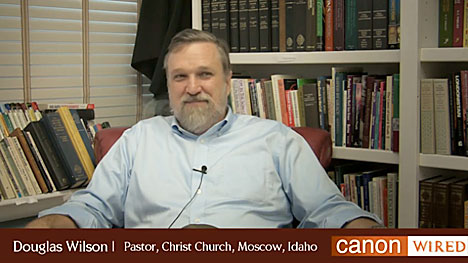
Here, Doug Wilson explains why the accusation that he is “mono-covenantal” is false.
It seems to me that if any distinction is to be made, it is not between pre- and postlapsarian history. The dichotomy Paul describes in Galatians is not between God’s Covenant with Adam and His Covenant in Christ, but between the Mosaic Covenant and the Adamic Covenant.
Continue reading
1 comment | tags: AD70, Covenant Theology, Galatians, Genesis, Paul, Postmillennialism, Revelation 20 | posted in Biblical Theology, The Last Days
Aug
3
2010

A lot of very smart Christians believe that the Creation account was written as a foil for Ancient Near Eastern creation myths. It was written by Moses to rally Israel culturally, to set a boundary between the Hebrew identity and that of the nations.
Continue reading
Comments Off | tags: Genesis, James Jordan, Literary Structure | posted in Bible Matrix, Biblical Theology, Creation, Quotes
Jul
30
2010

Art is man’s interpretation of the world, but the world itself is the original art. Everything is physical, literal, historical, but everything is also symbol. This is not an interpretation imposed upon what we observe. The Creation was actually made as symbol. Without the Word of God, we are rendered unable to interpret it. [1]
The meaning of the sun, moon and stars in Genesis 1 is not simply a poetic idea. The purpose of the heavenly lights is actual and practical. Moreover, it will be measured out in human flesh over and again throughout history.
Continue reading
Comments Off | tags: Abel, Animism, Cain, Creation Week, Genesis, Literary Structure, Marilynne Robinson | posted in Biblical Theology, Creation, Quotes
Jul
27
2010
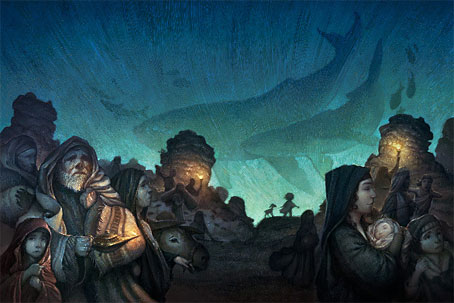
Adam couldn’t face God. Cain’s face fell. Moses’ face shone with reflected light when he returned from the mountain of God. Bezalel and Aholiab constructed the Table of Facebread, which corresponded in the cherubim to the Face Of The Man. David and his men ate the facebread. Saul feared Goliath, but David’s face was red, literally “filled with blood,” before he bloodied Goliath’s face and the usurper fell facedown. [1]
Continue reading
2 comments | tags: Altar of the Abyss, Ascension, Circumcision, Creation Week, Genesis, Incense Altar, Pentecostal, Revelation, Systematic typology, Table of Showbread | posted in Bible Matrix, Biblical Theology, Creation, The Last Days



































